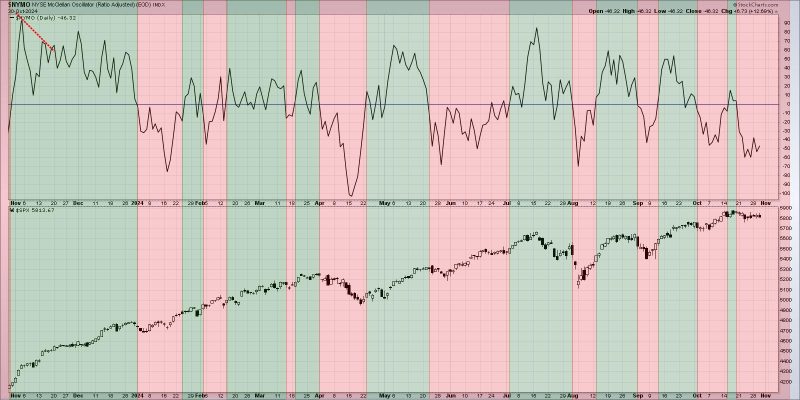In recent weeks, the financial markets have been facing a notable shift in momentum, sparking discussions among analysts and investors about potential signals of a broader market correction. One prominent indicator that has gained attention is the concept of breadth divergences. These divergences, which occur when the number of stocks participating in a market rally starts to decrease while major indexes continue to climb, have historically been seen as a warning sign of a potential market reversal.
The phenomenon of breadth divergences is rooted in the concept of market breadth, which refers to the number of stocks participating in a particular market movement. A healthy market typically sees a majority of stocks moving in the same direction as major indexes, signaling broad participation and underlying strength. However, when fewer stocks are advancing alongside the index, it suggests that the rally is losing momentum and becoming increasingly concentrated in a smaller group of stocks.
One key point of concern raised by the presence of breadth divergences is the potential for a significant market correction. During past instances when breadth divergences have emerged, market downturns have often followed as the lack of broad participation signaled underlying weakness in the market. Investors and analysts alike are closely monitoring current market conditions to see if history will repeat itself.
Another factor contributing to the significance of breadth divergences is the role of market rotations. As certain sectors or industries fall out of favor, the market may see a shift in leadership towards previously overlooked sectors. If breadth divergences persist and certain sectors continue to underperform while others thrive, it could indicate a changing market landscape that may lead to increased volatility and potential corrections.
While breadth divergences are indeed a critical factor to consider when assessing market conditions, it is important to note that they are not infallible predictors of market direction. Markets are complex systems influenced by a multitude of factors, and other indicators and events can also impact their trajectory. As such, investors are advised to use breadth divergences as one tool among many in their analysis of market trends and potential risks.
In conclusion, the emergence of breadth divergences in the financial markets has sparked discussions and debates about the possibility of an impending market correction. As investors continue to monitor market conditions closely, the presence of breadth divergences serves as a reminder of the importance of assessing market breadth and participation in addition to traditional indicators. While breadth divergences can provide valuable insights into market health and potential risks, they should be considered alongside other factors in making informed investment decisions.


































